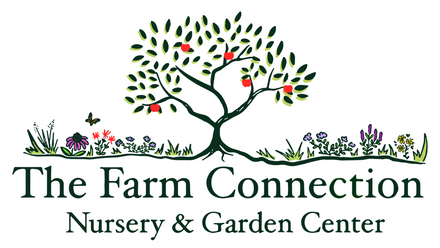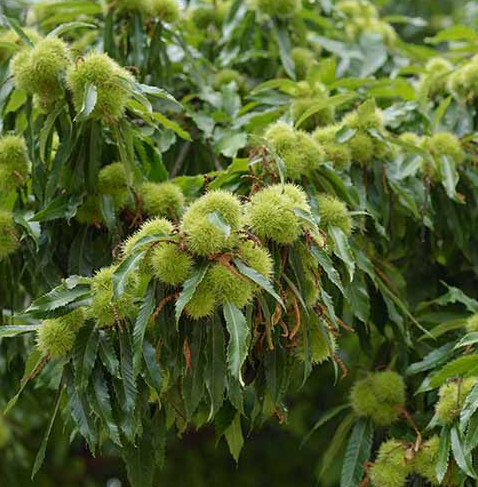Chestnut, American-Asian, Bare Root
Blight-Resistant Nut Tree for Food Forests
Chestnut, American-Asian, Bare Root - Bare Root / 6-18" Seedling is backordered and will ship as soon as it is back in stock.
Couldn't load pickup availability
Delivery and Shipping
Delivery and Shipping
Make sure to thoroughly review our entire "Shipping, Returns, Refunds, and Our Guarantee" page for all relevant details about ordering from our store.
Making a purchase from our store constitutes an agreement to all the conditions outlined in those policies.
We appreciate your support and look forward to being your favorite plant provider!
Subscribe to our newsletter
Sign up for exclusive offers.
Chestnut, American-Asian Hybrid (Castanea dentata — Castanea mollissima)
This American-Asian chestnut hybrid brings together the best traits of the American Chestnut (Castanea dentata) has fast growth, tall timber form, and sweet, flavorful nuts with the blight resistance of the Chinese Chestnut (Castanea mollissima). Developed to restore chestnut trees to eastern North American landscapes, these hybrids are ideal for food forests, silvopasture systems, and regenerative orchards. The trees grow quickly, produce abundant nuts for both wildlife and human consumption, and contribute to long-term reforestation and agroforestry goals.
Key Characteristics
-
Blight-Resistant with American Chestnut Form
These hybrids retain the upright, tall-growth habit of the American Chestnut while gaining blight resistance from their Chinese parentage. This makes them suitable for long-term forest planting and timber production, unlike pure Chinese cultivars which tend to be shorter and spreading. -
High Nut Yields for Food and Wildlife
The trees begin bearing nuts as early as 5-7 years after planting, producing large crops of sweet, starchy nuts that are edible for humans and highly valued by deer, turkey, squirrels, and bear. Nuts drop in late September to October and are a key mast crop for woodland ecosystems. -
Vital for Food Forests and Silvopasture Systems
As a nut tree and overstory species, this hybrid chestnut plays a major role in permaculture and silvopasture design, providing shade, forage, and food for both livestock and humans. Chestnuts are one of the few temperate nuts that can be eaten fresh or dried, ground into flour, or stored long-term. -
Fast-Growing and Long-Lived
Hybrid chestnuts grow rapidly- 3 feet or more per year under ideal conditions and can live for decades. They prefer full sun and well-drained, slightly acidic soils and should be planted in pairs or groups for effective cross-pollination. -
Important Tool for Ecosystem Restoration
These hybrids are used in efforts to re-establish chestnut forests in the eastern U.S., where the native American Chestnut was decimated by chestnut blight. Planting these trees supports long-term restoration of native tree canopy and biodiversity.
Product Details
- Sun Requirements: Full sun
- Soil Requirements: Medium-dry to medium
- Bloom Time: June
- Bloom Color: Creamy white catkins
- Fruit Qualities: Sweet, starchy nuts enclosed in spiny burrs
- Fruit Uses: Fresh eating, roasting, flour, wildlife forage
- Fruit Ripening Month: September-October
- Required Chill Hours: ~400-800
- Pollination Requirements: Requires a second chestnut (American, Chinese, or hybrid) for pollination
- USDA Hardiness Zones: 5-8
- Mature Height: 40-60 feet
This American-Asian chestnut hybrid offers ecological resilience, food production, and restoration value all in one tree. A foundational species for food forests, silvopasture, and rewilding efforts across the eastern U.S.
-
Sun RequirementsFull Sun
-
Soil RequirementsMedium-Dry, Medium
-
Bloom ColorCream, White
-
Bloom TimeJune
-
USDA Hardiness ZonesZone 5, Zone 6, Zone 7, Zone 8
-
Chill Hours400
Payment & Security
Payment methods
Your payment information is processed securely. We do not store credit card details nor have access to your credit card information.




